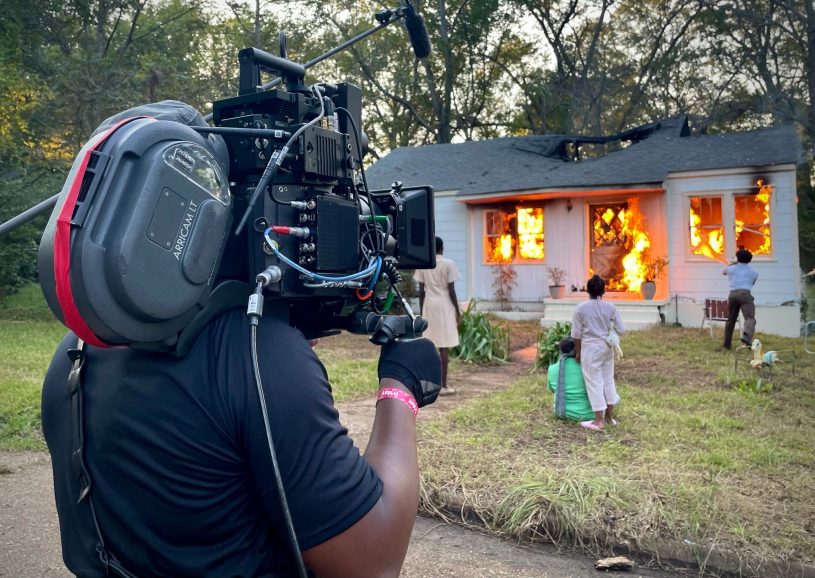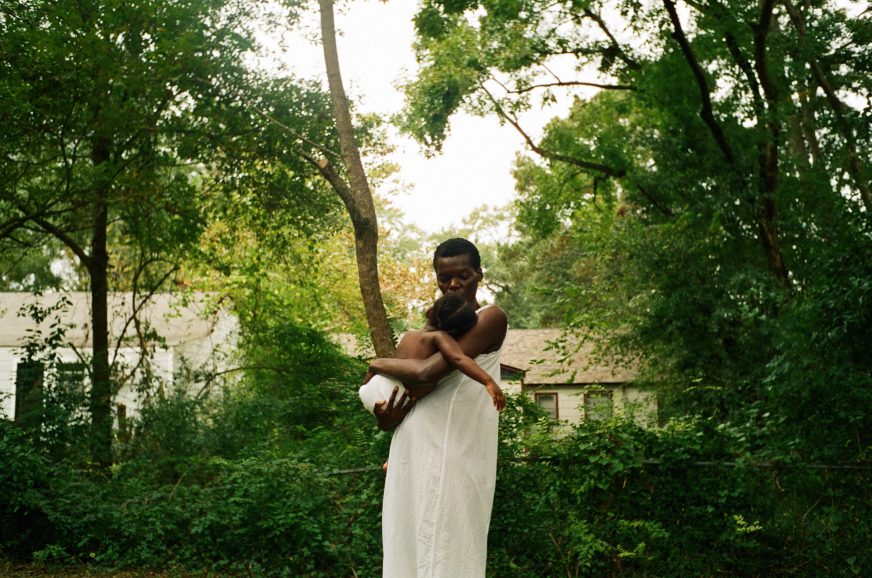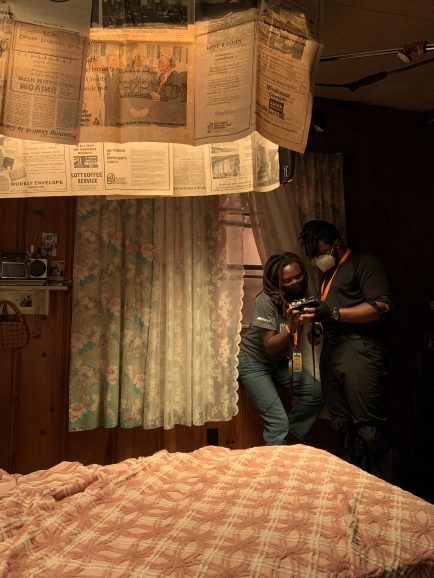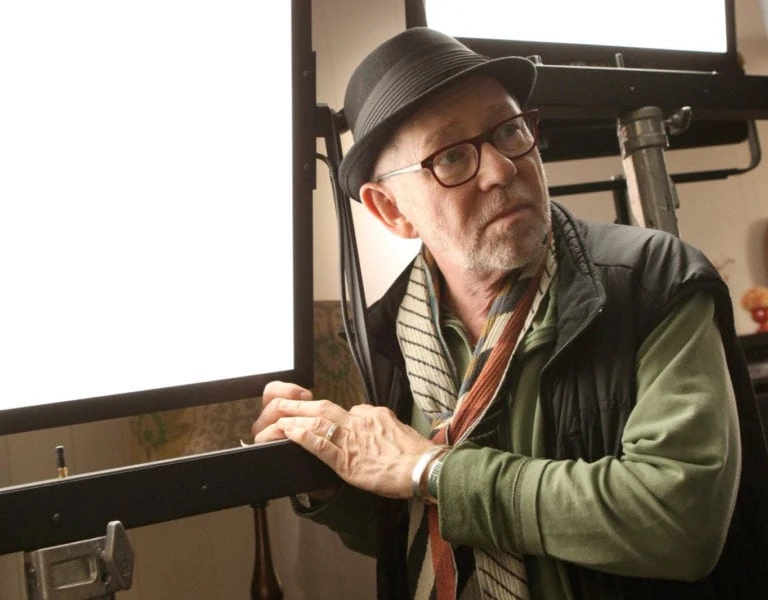Textures of living
Shooting on celluloid and creating tactile imagery was key when cinematographer Jomo Fray lensed a love letter to the last three generations of women in director Raven Jackson’s family.
Taking part in the US Dramatic Competition at Sundance 2023 was Raven Jackson’s All Dirt Roads Taste of Salt, which reunites her with cinematographer Jomo Fray who previously shot her first short film Nettles. The mediative experimental drama explores the influential people, places, and events Mack (Kaylee Nichole, Zainab Jan) has encountered while growing up in Mississippi.

“The movie is a love letter to the last three generations of women in Raven’s family in a lot of the stories and dialogue,” states Fray. “Most of the things are fictionalised but for the scene in the church, her mother, father, and grandmother are actually there. Where we were shooting in Mississippi was the place where her mother and father met initially. There was so much of this primordial energy that she wanted to capture.” A mantra for Fray is to shoot the way a director dreams. “I want to create the images a director would produce if they knew what we knew about cinematography.”
There was no set narrative structure. “It’s about building a scene that has specific coverage knowing that those scenes could be put into a different order but that’s why you find motifs naturally as you’re shooting. All of a sudden if you keep shooting these hands, you’re giving yourself a match point in and out of a scene.”

A 12-point manifesto was created by Jackson and Fray inspired by the contradictory one produced by Emmanuel Lubezki ASC AMC and Terrence Malick for The Tree of Life. “The manifesto wasn’t so much a ruleset but permission to interpret the image as poetry,” notes Fray. “Number one on the manifesto was stay elemental in the approach. We ended up shooting with a set of Master Primes [12-150mm] which have a romantic neutrality and 35mm at 3-perf with a push one process because those things together had a simplicity.”
Onset lighting was avoided. “We had an exceptional gaffer in Jay Warrior and amazing key grip Forrest Penny Brown. I love when light is reflected and comes back. It was primarily working with HMIs [1.8K and 4K], mirrors and a good number of LEDs that were balanced to the temperature of the daylight, so they blended in with everything. We used a fair bit of Rosco DMG LEDs that have such a vibrant colour spectrum and hit a lot of deeper colours. The Light Bridge mirrors were a big thing for me, either 2×2 or 4×4, which often would be pushing the sunlight.”

Throughout principal photography fortuitous events occurred and were captured such as when Mack goes from the inside of the church onto the front porch as rain pours down. “That was the last shot of that day, and we had set up all of these mirrors around the church,” recalls Fray. “Mack was going to pass between these hard light pools coming from the mirrors walking through to the door of the church with her father standing out there. Then this huge storm happens, and everyone has to go inside because there’s thunder and lightning. We turned off all of the lights. As Raven and I were sitting there, we said, ‘This is incredible.’ We threw the camera up and shot this image two times and then on the third take it stopped raining. It felt like we were capturing lightning in the bottle because when we push outside you can see down into the valley the places where there is hard sunlight and rain clouds.”
Jackson envisions images in celluloid. “We shot on 500T push one for the entire movie which goes back to the manifesto where we wanted everything feeling as present tense,” remarks Fray. “We didn’t want the grain structure or colour rendition to change. It had to be unified throughout. We had a single set of lenses and single way of processing to create this visual continuity despite the time having no continuity.”

The imagery had to be tactile rather than being clean with Jackson scanning photos from family albums as visual references. “The way in which some of those photos have sun stains or discolouration over time was a big inspiration for us.” The shifts between the various time periods were not emphasised. “What we are seeing are individual moments in Mack’s life in the present tense. We had a conversation early on with our brilliant colourist Alex Bickel [founder of Color Collective] about not necessarily having colour or lighting changes to help the audience know what the time period is.”
ARRI Rental changed all of the HD taps to the newer IndieASSIST so the imagery was readable for the onset monitors. “We had two or three bodies for the ARRI Arricam LT, but it was essentially a one-camera shoot,” explains Fray. “Everyone was focused at one angle at a time and since the coverage was so minimal even for large scenes, like the burning house, we probably had three shots. It was about the texture of that emotion rather than covering it more traditionally.”

Selecting an aspect ratio of 2.39:1 was a result of Fray and Jackson having “always thought of this movie as widescreen because so much of it is about how Mack relates to her environment.” All Dirt Roads Taste of Salt has had a profound artistic impact on Fray. “Every single day we would read the manifesto together, and Raven would turn to me and say, ‘Today we leap. Take risks.’ It was a powerful process because this was one of the first projects where the director empowered me to go far and deep.”










